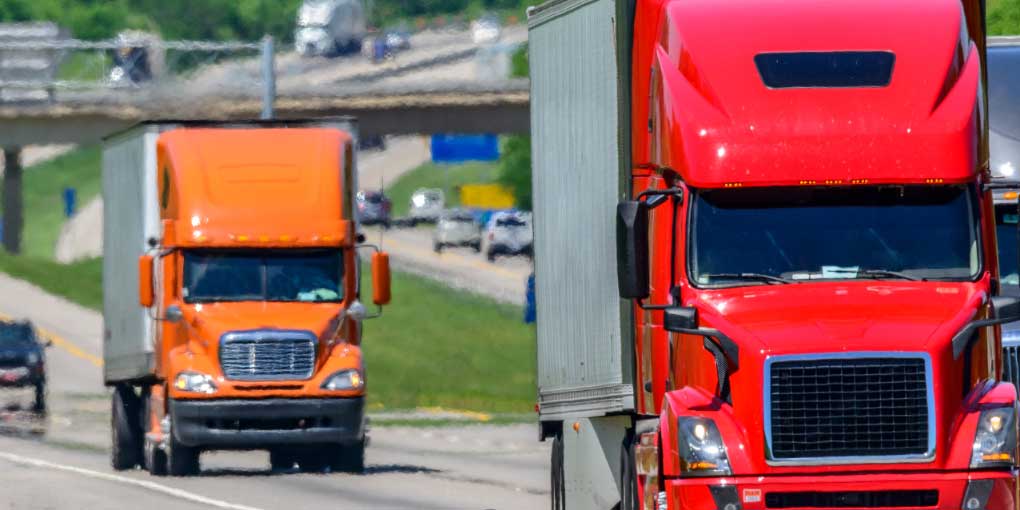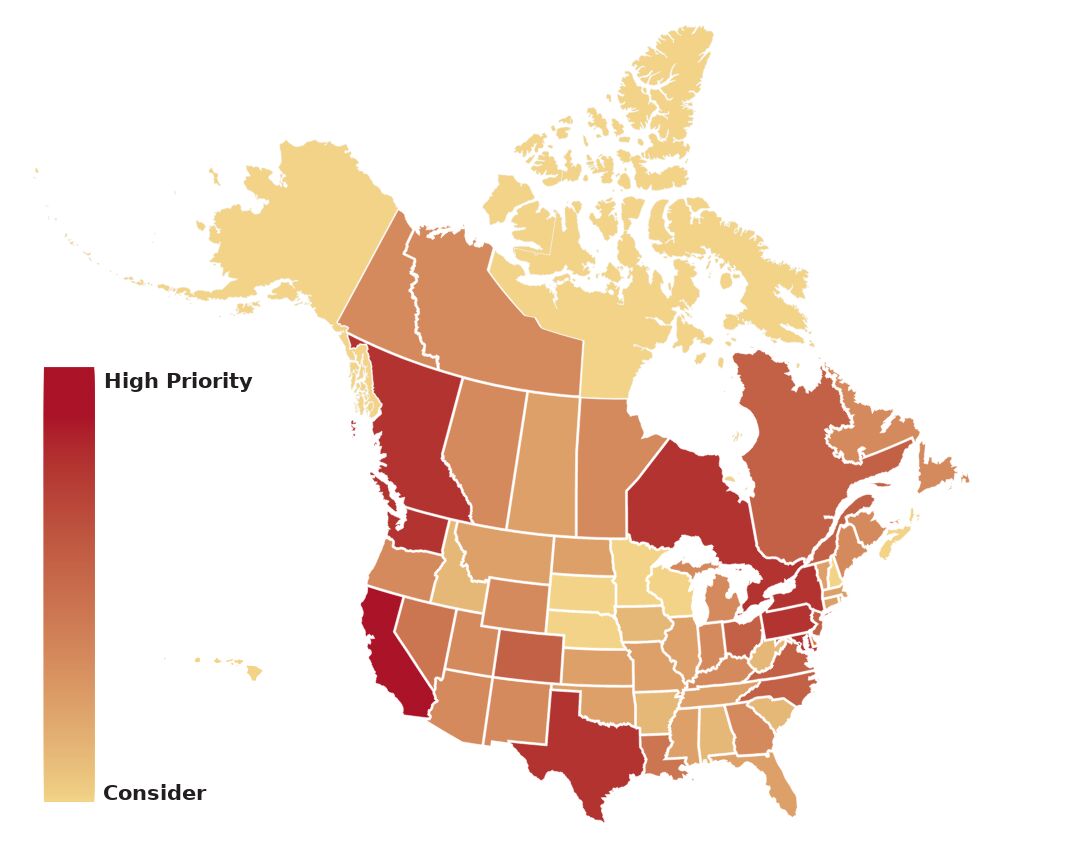High Potential Regions for Electric Truck Deployments
Regional haul, heavy-duty trucking operations are good candidates for electrification due to the segment’s relatively short-hauls and return-to-base operations. Many early electric truck deployments have taken place in California, but as the market matures, fleets, utilities, manufacturers, policymakers, charging companies, and other industry stakeholders are seeking assistance to prioritize regions outside California for future deployments of this technology.

The Guidance Report proposes a three-part framework that the industry can use to prioritize U.S. and Canadian regions for electric truck deployments:
- Technology – Identify the regions that are most favorable to the unique attributes of the technology itself.
- Need – Identify the regions that exhibit the greatest need for the technology.
- Support – Identify the regions that provide the most support for the technology.
In evaluating each of these criteria, fleets should consider not just which regions are best suited for electric trucks, but which represent the strongest competitive advantage over diesel trucks.
In considering where to deploy electric trucks, there’s a lot to think about – everything from charging infrastructure to which climates the technology operates the best in to where the most funding and incentives are available. This framework helps not just fleets, but utilities, OEMs, policymakers, and others think through the many considerations to ensure that wherever they deploy electric trucks that they’re a success.
– Patrick Browne, Director of Global Sustainability, UPS
NACFE performed an initial analysis of where the three criteria intersect to create a “hot spot” for near-term regional haul electric truck deployment. A heatmap was developed to identify those regions fleets should consider to be the highest priority for electric truck deployments.
Key Findings
- Regions favorable for electric truck deployments are found across the U.S. and Canada.
- The Northern California, Southern California, Texas Triangle, Cascadia (stretching from Portland, Oregon through Seattle and into Vancouver, Canada), Colorado Front Range, Northeast U.S., Greater Toronto Area, and Greater Montreal show particularly high potential.
- Many trucking operations are not confined to individual provinces or states, and as such, fleets should think about electric vehicle deployments at the regional level.
- Policies and incentives to support electric truck adoption vary drastically by region.
- Policymakers and advocates looking to increase adoption of medium- and heavy-duty vehicles in their regions should consider which of the framework criteria they can change.
- This analysis identifies the regions with the highest potential for regional haul electric trucks now. As the technology develops further, we expect even more regions to favor electric trucks.
- Fleets should work with policymakers, regulators, utilities, and other stakeholders in their region to collaboratively develop strategies to advance zero-emission trucks.
Recommendations
- Support Deployments of Electric Trucks – Collect real world data and lessons learned from initial deployments to refine both the framework and the analysis.
- Expand Analysis to Other Geographies – Using the framework outlined in the report, conduct similar analyses for locations outside the U.S and Canada.
- Conduct Analysis at Smaller Scale – Allow for more granular data relevant to smaller scale areas – such as utility territories, metropolitan areas, key trucking corridors, or census tracks – by performing analysis with more fine-grained resolution.
- Share Results with Policymakers – Present analysis and findings to policymakers to help inform plans for trucking electrification in their jurisdiction. Help identify opportunities and address challenges.
- Analyze Economic Development Opportunities – Conduct analysis of economic development opportunities for high-priority regions, including jobs, new supply chains, and local manufacturing.

